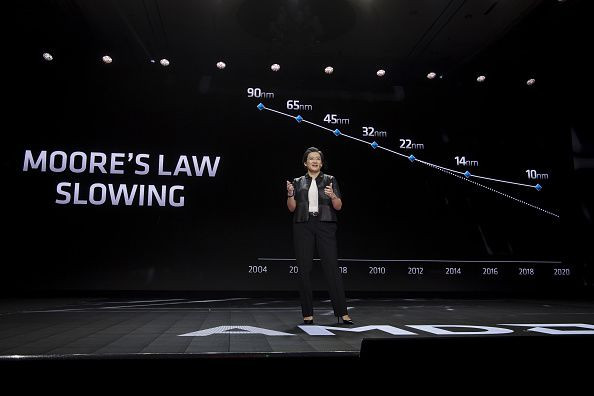AMD’s Plan Of Overthrowing Intel With Leaked Zen 4 And Zen 5 CPUs
A new report recently surfaced online, claiming that both Zen 4 and Zen 5 are currently being designed simultaneously by AMD. The semi-con giant officially confirmed that it is at the moment developing Zen 5, which will be developed and molded along with Zen 4, with the design of Zen 3. Zen 2 is the current AMD architecture available in the market that powers the Ryzen and Epyc CPUs and Navi GPUs, with Zen 3 as its successor.
Mark Papermaster, Executive VP and CTO at AMD, disclosed some interesting details while talking about the AMD Epyc Horizon Executive Summit that took place in Rome just a week ago. The design of Zen 3 architecture is already complete with both AMD Zen 4 and Zen 5 in the design stage, the CTO shared. These are all part of the company’s commitment to be the leader in performance once again and stay there.

The AMD Zen 5 and Zen 4 are currently being developed by two individual leapfrogging design teams, says the report. The AMD Zen 4 is scheduled to arrive in 2022, and Zen 5 might be released by 2024, the site predicts. AMD’s Zen 2 architecture utilized a 7nm process and introduced impressive performance boosts compared to the first Zen architecture with a 15 percent boost in Instructions Per Clock (IPC).
Meanwhile, Zen 3 architecture will step to 7nm Plus, which is a more refined 7nm process. Rumors have it that it will see an IPC boost between 8 percent and 10 percent compared to the Zen 2. Zen 3-based chips are anticipated to be released in the second half of 2020and will not require a new motherboard when upgrading to Ryzen 3000 processor.
Another interesting piece of rumor claims that the AMD Ryzen 4000 will move forward when it comes to simultaneous multithreading with the likelihood of getting four threads for each core. This means we might see a dual-core processor with eight threads and a quad-core processor with 16 threads. It is clear that AMD would like to push itself further to get ahead of the competition and snatch the market leader in terms of performance.
© Copyright IBTimes 2025. All rights reserved.



















